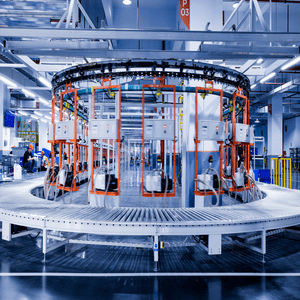Textile Finishing – Energy Audit & Decarbonization Plan
A garment finishing site running dyeing, denim washing, and tie-dyeing on a daytime shift. Energy mix is grid electricity and district steam; baseline consumption is ~4,651 MWh/year (≈408 MWh electricity and ≈4,242 MWh steam) with ~1,628 tCO₂e/year. Steam serves wet processes and dryers; electricity powers drives, fans, compressors, and auxiliaries.
- Baseline validated from invoices and metering: electricity ~9% of energy; steam ~91% (steam ~6.5 bar, 200 °C).
- Findings: fixed-timer dryers (over-drying risk), bypassed condensate return, degraded steam insulation/leaks.
- Gap: no site-wide energy metering for electricity/steam.
- Steam system: repair leaks/restore insulation; recommission condensate recovery to pre-heat make-up water.
- Dryers: add exhaust humidity sensors; VFDs on circulation/exhaust fans; upgrade motors to IE4 at failure.
- Washing/extraction: upgrade IE2 motors to IE4 at failure.
- Process & controls: optimize compressed-air pressure; deploy energy metering (electricity/steam); introduce low-temperature cold wash-off chemistry where compatible.
- On-site renewables: rooftop PV feasible under third-party arrangement (tenant roof).
- Steam trap testing and periodic leak surveys.
- Dryer control tuning (humidity set-points & stop logic).
- Verification of metering points and data quality.
- Preventive maintenance for steam distribution, condensate return, fans, and compressors.
- Standard operating procedures (SOPs) covering dryer controls, compressed-air setpoints, and metering checks.
- Staff training on leak detection, insulation upkeep, and data-driven operation.
- Steam demand reduction via insulation repair, condensate heat recovery, and smarter dryer control.
- Demand-based fans with VFDs; optimized compressed-air pressure to curb waste.
- Progressive electrification and PV integration based on metered performance.
- Early Commitment: ~667 MWh/year energy reduction and ~336 tCO₂e/year (≈21% emissions cut vs. baseline).
- Strong Commitment: up to ~2,445 MWh/year and ~920 tCO₂e/year (≈57% emissions cut).
Result: A clear, staged plan that first trims steam and electricity waste (insulation, condensate heat recovery, smart dryer control, motor/VFD upgrades, cold wash-off, compressed-air optimization), then adds PV and continuous metering—delivering ~14–53% site energy savings (≈667–2,445 MWh/year) and ~21–57% CO₂ reduction (≈336–920 tCO₂e/year) depending on the selected package.

